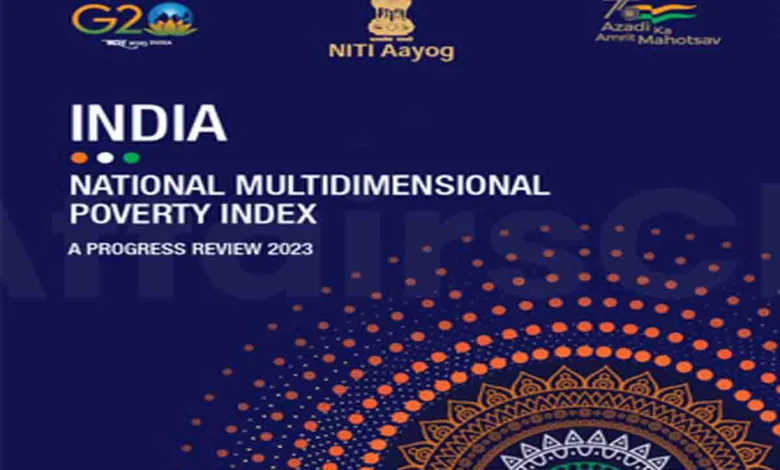Multidimensional poverty reduces substantially in U’khand

NITI Aayog report says 9,17,299 people came out of poverty in U’khand in 5 years
Sunday, 07 JANUARY 2024 | GAJENDRA SINGH NEGI | DEHRADUN
In what can be termed as good news for Uttarakhand, a report of NITI Aayog shows that the poverty has decreased substantially in the State in a five-year period from 2015-16 to 2019-21. The apex public policy and planning body of the country has recently released its multidimensional poverty index -2023 which is based on the data provided by the National Family Health Survey (NFHS) of 2015-16 and 2019-21. As per the index, 17.67 per cent of the total population of the State was poor in the year 2015-16 which reduced to 9.67 per cent of the population in the year 2019-21. A total of 9,17,299 people of the State came out of multidimensional poverty during this five-year period. The report also shows that the intensity of the multidimensional poverty which was 44.35 per cent in the year 2015-16 reduced to 41.99 per cent in the year 2019-21.
A district-wise analysis of this poverty index shows that during 2015-16 to 2019-21, 16.18 per cent people in Almora district came out of poverty while Uttarkashi and Champawat districts were second and third with 14.74 per cent and 12.82 per cent people coming out of poverty respectively during this period. The data shows that Dehradun district has only 3.02 per cent of the population that is under multidimensional poverty. Rudraprayag has 5.14 per cent and Pithoragarh 6.48 per cent population under this poverty. As per the data of 2019-21, a total of 16.29 per cent people in Haridwar are poor which is highest in the State.
The additional chief executive officer of the Centre for Public Policy and Good Governance (CPPGG) Manoj Pant told The Pioneer that the report of NITI Aayog is encouraging and shows that the State has performed well to alleviate poverty. He said that the State government has prepared a road map to reduce poverty further under the Sashakt Uttarakhand campaign.
In the multidimensional poverty index, a household is considered on the dimensions of health, education and standard of living. Indicators such as nutrition, child adolescent mortality and maternal health are used as regards health while years of schooling and school attendance are used in education dimension. Cooking fuel, sanitation, drinking water, electricity, housing, assets and bank accounts are used in determining the standard of living.






